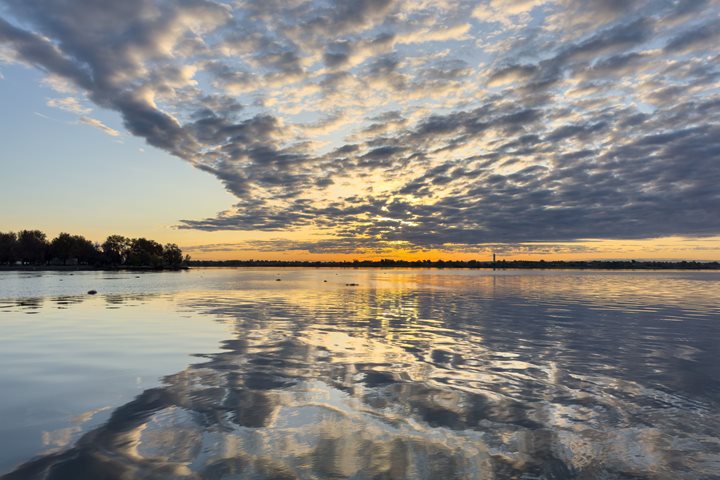Early morning found us entering the west end of the spectacular Columbia River Gorge. Some 17 million years ago, an ancestral Columbia River flowed across a relatively flat plain of ancient volcanic and sedimentary rocks. Then far off to the east near present-day Idaho, rivers of magma began to flow out of the Earth's crust. These glowing streams of lava filled the old river channel, forcing the Columbia River to find a new course to the sea. Dozens of lava flows occurred over the course of millions of years until this particular volcanic episode slowed about 6 million years ago.
About this time, subduction of the Juan de Fuca Plate (an oceanic plate) under the Pacific Northwest initiated the uprising of the Cascade Range. The Columbia River was able to cut downward at least as fast as the uplifting mountains. Thus a river valley through the Cascades was formed.
But then came the floods; this time not of molten rock but of melted glacial ice. During the Pleistocene, a lobe of the Cordilleran Ice Cap in Canada moved south damming up the Clark's Fork River. Behind this 2,000-foot dam, Glacial Lake Missoula filled until the catastrophic collapse of the ice. As much as 600 cubic miles of water rushed downstream, scouring eastern Washington and Oregon, momentarily slowed by narrow places along the Columbia River's course. Glacial Lake Missoula may have filled and emptied over 40 times. The v-shaped river valley cut through the Cascades was dramatically carved into the broad gorge we see today. Side tributaries were suddenly perched higher than the main river creating hanging valleys, where beautiful waterfalls cascade over the lava cliffs.
One such waterfall, Multnomah, is over 600 feet tall. We had an opportunity to visit and photograph this lovely curtain of white water.
In the afternoon after sailing upstream to Hood River, we boarded coaches to drive up the Hood River Valley, noted for its farms and wineries. We made a stop at the Rasmussen Farm, where we could sample the current harvest of pears and apples. Nearby we visited the Wy'east Winery for a tour of their facility and, of course, a tasting.
We then headed back down the valley to the town of Hood River and had a chance to stroll around this small but vibrant community. As the sun set, the National Geographic Sea Bird set sail for The Dalles, our overnight berth.







